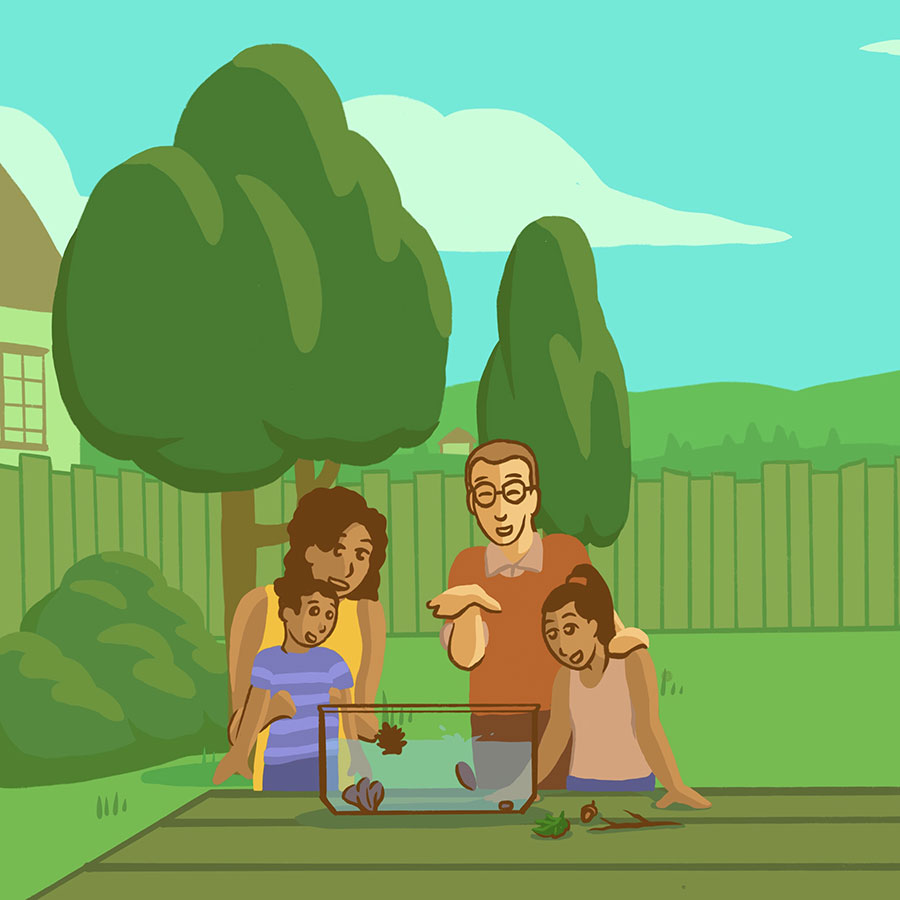
Sink or Float
- Easy
- Not Messy
- 15 Minutes
- Indoor or Outdoor
Activity adapted from PBS Kids for Parents.
You Will Need
A container for water (a clear container works best)
A collection of 6-12 items to test if they sink or float
Paper
Pencil
Directions
- Have your kids collect the items they want to experiment with. This could be bits of nature such as pine cones, grass, flowers, sticks, rocks, shells, etc. Or items from around the house such as small toys, crayons, pencils, a ball of aluminum foil, paper clips, blocks, metal spoon, apples, anything! (If you give your kids a list of items to collect, it could be a fun scavenger hunt for them to enjoy while you get the other items set up!)
- Ask your child to predict which items they think will sink, and which items they think will float. Write down their predictions on the paper. Ask them why they sorted the items the way they did.
- Test your predictions! Drop each item into the water to see what happens.
- Were the predictions correct? Why or why not? Note your observations on the paper.
- Sort the items again based which items actually sank or floated. Talk about the features that were common about the items in each category.
How it works
All objects are made up of teeny tiny molecules. Objects with tightly packed molecules (like rocks) are more dense than objects with loosely packed molecules (like a leaf.) Density is a measure of how compact the molecules of an object are. Objects that are more dense than water will sink, and objects that are less dense than water will float.
Most young scientists guess that items will sink or float based on their size or weight. Did any small items sink that kids predicted would float? A common example of this is a pebble or a marble. Pebbles and marbles are very small but also very dense, so they actually sink when many young scientists predict they will float.
Did you experiment with any large objects that are filled with air? Air is less dense than water, so large hollow objects, like a basketball, float! (This is also partially how enormous ships float.)
The shape of the object is another thing to consider. Did you observe anything about the shape of the items that sunk? Generally, the more surface area of an object that touches the water, the more likely it is to float. This is called buoyancy. The object is pushing down on the water, and the water is pushing up on the object. (You can demonstrate buoyancy with a piece of aluminum foil. First, lay the foil out flat on top of the water - it will float. Then ask your young scientist to crush the foil into a tight ball, and try it again. This time, it should sink! How can this be? It is the same piece of foil! The reason is the amount of surface area that is touching the water - the more surface area it has to touch the water, the more likely it is to float!)
Key Words
- Sink
- To go below the surface of the water
- Float
- To stay on or above the surface of the water
- Observing
- Using our senses to gather information
- Density
- How compact the molecules of an object are
- Buoyancy
- The upward force of an object that is produced by the fluid or air that object is placed in
